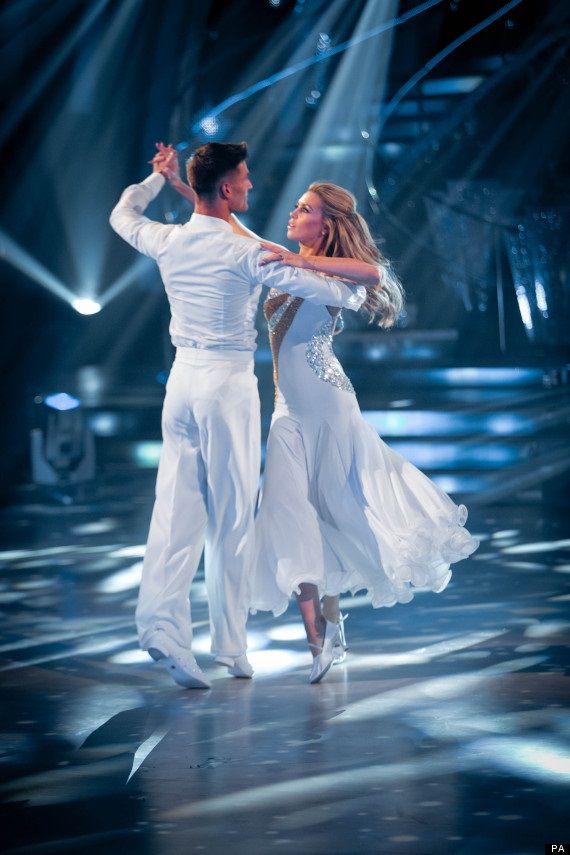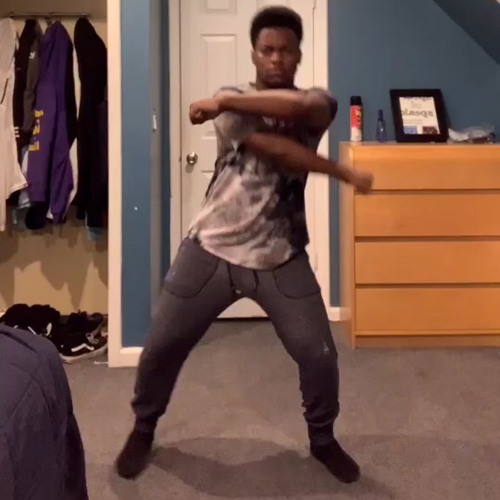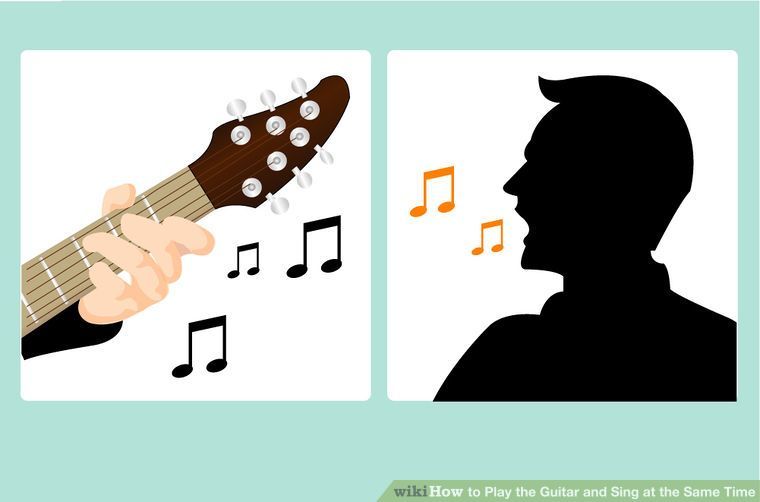How to dance brazilian forro
How to Forró Like a Brazilian
Dance in northeast Brazil | © Pixabay
Sarah Brown
22 May 2017
Forró is a genre of music that originated in northeast Brazil and has evolved to include many different musical beats and dance styles. Like the waltz, it is an intimate dance conducted in pairs. Culture Trip takes a look at forró’s background and explains how to enjoy it like a Brazilian. There are two theories to the origin of the name, forró. The first is that it comes from the word forrobodó which roughly translates to ‘great party’ or ‘commotion’. It’s believed the word was shortened to forró to describe parties that featured the specific music and dance. The most popular theory, however, is the story that has been supported from artists like Gilberto Gil. When the English engineers were building the Great Western Railway near Recife in the 1900s, they would often throw parties on the weekends. These parties were either for railway staff or open to the public, the latter being advertised as ‘for all’. Eventually, a derivation of the English words ‘for all’ became forró, and so was born the name of the popular northeastern music and dance.
Forró is commonly linked to the Festa Junina (June Festival), which celebrates the harvest and several Christian saints. Its popularity took over the northeast of Brazil, where it is still the number one music genre and dance there today. However, it is popular throughout the whole country thanks to the godfather of forró, Luiz Gonzaga, who spread the genre across Brazil. In the southeast, a modified version has settled in bars, dance halls, and parties known as college forró, includes influences of samba rock and salsa.
The differences between the forró in the northeast and forró in the southeast are in the dance style—in the northeast, the dance is much more intimate as pairs stay very close; in the southeast, the influences from salsa and other dances result in variations of step sequences, spinning, and complex moves.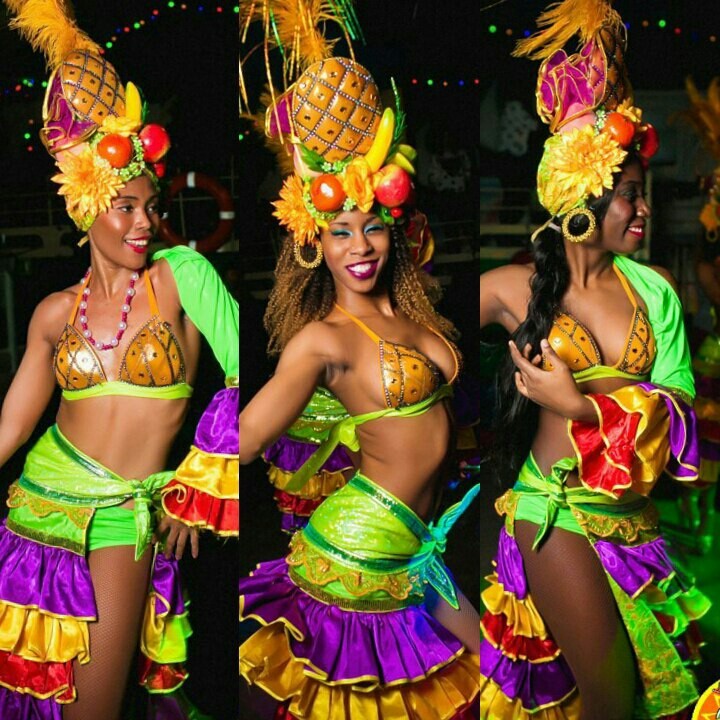
The music of forró is a harmony of three instruments: the accordion, the zabumba, and the triangle. The different styles of dances are intrinsically linked to the three styles of forró rhythms: xote, a slow-paced form of forró; baião, the original forró and the one found most commonly in the northeast; and, arrasta-pe, the fastest form of forró. From these rhythms come different dance forms.
Xote dance style is a classic left-left, right-right foot step whilst standing close to your partner. Another variation of xote is the universitario, which is similar to the classic xote yet with forward-backward moves and variations of sequences. The latter is commonly found outside of the northeast. Miudinho is another xote variation that has a lot of hip movement and intimacy between the pairs.
Baião is the original forró and has less movement than xote. Valsado is a form of baião which involves staying close to your partner so your bodies are touching while the legs are crossed over each other as they’re moving from side to side. Arrasta-pe is a fast version of xote and is breathtaking to watch.
Valsado is a form of baião which involves staying close to your partner so your bodies are touching while the legs are crossed over each other as they’re moving from side to side. Arrasta-pe is a fast version of xote and is breathtaking to watch.
The best way to experience forró like a Brazilian is to go to any nightclub or dance hall in the northeast of the country. Locals are open to teaching and guiding those interested in learning, so don’t feel shy having a go on the dance floor. Alternatively, take some classes to learn the moves. Dance CCC in Rio de Janeiro has regular forró dance classes in a relaxed, group atmosphere. Baillar Dance School in Recife, the home of forró, also offers the opportunity to practice the moves before heading out to a local club.
Dance CCC, R. Sete de Setembro, 237 – Centro, Rio de Janeiro, +55 (21) 3176 1412
Baillar Dance School, Rua Dr. Carlos Chagas , 32 – Santo Amarto, Recife, +55 (81) 3423 9155
Carlos Chagas , 32 – Santo Amarto, Recife, +55 (81) 3423 9155
Since you are here, we would like to share our vision for the future of travel – and the direction Culture Trip is moving in.
Culture Trip launched in 2011 with a simple yet passionate mission: to inspire people to go beyond their boundaries and experience what makes a place, its people and its culture special and meaningful — and this is still in our DNA today. We are proud that, for more than a decade, millions like you have trusted our award-winning recommendations by people who deeply understand what makes certain places and communities so special.
Increasingly we believe the world needs more meaningful, real-life connections between curious travellers keen to explore the world in a more responsible way. That is why we have intensively curated a collection of premium small-group trips as an invitation to meet and connect with new, like-minded people for once-in-a-lifetime experiences in three categories: Epic Trips, Mini Trips and Sailing Trips.
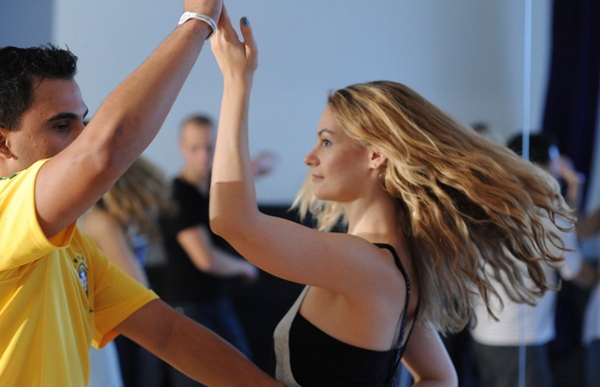 Our Trips are suitable for both solo travellers and friends who want to explore the world together.
Our Trips are suitable for both solo travellers and friends who want to explore the world together.Epic Trips are deeply immersive 8 to 16 days itineraries, that combine authentic local experiences, exciting activities and enough down time to really relax and soak it all in. Our Mini Trips are small and mighty - they squeeze all the excitement and authenticity of our longer Epic Trips into a manageable 3-5 day window. Our Sailing Trips invite you to spend a week experiencing the best of the sea and land in the Caribbean and the Mediterranean.
We know that many of you worry about the environmental impact of travel and are looking for ways of expanding horizons in ways that do minimal harm – and may even bring benefits. We are committed to go as far as possible in curating our trips with care for the planet. That is why all of our trips are flightless in destination, fully carbon offset - and we have ambitious plans to be net zero in the very near future.
Forró for Foreigners: How to Learn Portuguese While Dancing Forró
By mosehayward Last updated:
Forró is one of Brazil’s most popular couple’s dances, and—in my opinion, just after samba de gafieira and samba rock—it’s also one of the most fun.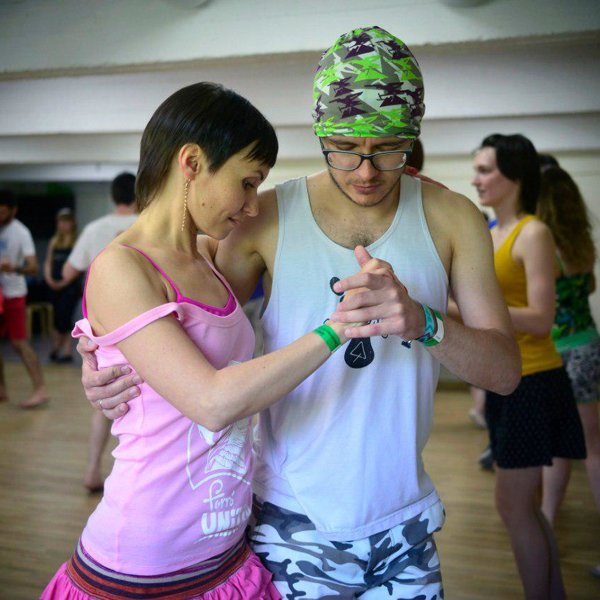
Forró has experienced a recent boom in Europe and North America.
As you discover the dance style, you’ll undoubtedly also become fascinated with Brazil itself and want to know more about the culture and language.
Contents
- How Can Learning Forró Help Your Portuguese?
- The Basics of Forró Dancing and Its Styles
- Essential Vocabulary for the Forró Dance Floor
- Key Forró Lyrics Every Forrozeiro/a Should Know
- Other Forró Recommendations
Download: This blog post is available as a convenient and portable PDF that you can take anywhere. Click here to get a copy. (Download)
How Can Learning Forró Help Your Portuguese?
Quite possibly, if you’re reading this article, you’re one of these forró fanatics looking to better your Portuguese. As someone whose first forays into the Portuguese language long ago were both caused by and devoted to Brazilian song lyrics, I understand.
Just as forró can become a delightful addiction, Portuguese also ropes you in. Fortunately, these two obsessions can feed off each other. Learning forró will improve your Portuguese. And the more Portuguese you speak, the more fun you’ll have chatting up the Brazilians you’ll meet dancing and understanding those lovelorn lyrics.
In this article we’ll focus on the key vocabulary that I think any forrozeiro (that is, forró aficionado) ought to know. We’ll start with some basics of forró culture and the important sub-genres. Then we’ll look at words and phrases for the dance floor and finally take apart some of the key lyrics.
This article is thus appropriate for anyone, from absolute beginners to more advanced learners who need to better understand forró-specific slang, expressions and lyrics.
If you’re in the early stages of your learning adventure, you may want to use the forró words and phrases discussed here as a jumping-off point for language exchanges or even grammar practice.
This article focuses on Brazilian (rather than European) Portuguese. Plenty of people dance forró quite well in Portugal too, but forró is Brazilian at heart, as are the vocabulary and lyrics that discuss it.
The Basics of Forró Dancing and Its Styles
To start with, you need to know how to properly pronounce the word forró. The two syllables are awkward for English speakers, since the double “r” is pronounced as an “h” sound and the stress falls heavily on the last syllable. There are good Brazilian pronunciations here.
That accomplished, you should get to know a few of the different dance styles of forró. Defining musical styles can be incredibly controversial, but I’ll try to give a general idea that hopefully won’t make me enemies. (I’m not going to go into all of the sub-genres; you’ve got Wikipedia or this article from Globo for that.)
Here are the key styles of forró to know:
xote — slow and sweet; often danced glued together with no separation or salsa-like twirls
baião or pé de serra — faster, the “original” forró from the Brazilian Northeast, also often danced in a tight embrace without turns
arrasta-pé — this is typically fast and has quite a different rhythm; one dances it directly marking the beats alternately on each foot, as in merengue
forró roots — this forró is principally associated with Itaúnas, home to an enormous forró festival
forró universitario — this “university-style” forró involves turns borrowed from samba de gafieira, zouk, salsa and other dances; it’s what one generally learns in forró classes both in Brazil and abroad
Forró superstar Dominguinhos offers his own succinct definitions of the different musical styles, with demonstrations, in this video:
So those are the styles, now how is all of this actually played? There are a variety of configurations of forró groups in the real world, but the most classic forró trio is composed of just three instruments:
zabumba — a large drum worn at waist height with a strap going over the shoulder; the player hits the top of it with a mallet to produce low thumps and on the bottom with a thin stick for light thwacks
triângulo — triangle, the other key forró percussion instrument; its rhythm is an easy telltale marker for dancers when learning when to step
sanfona — accordion, providing the melody
One of the musicians also sings, often plaintively and about some dear woman that doesn’t love him enough.
Essential Vocabulary for the Forró Dance Floor
Since dancing forró involves getting close, the first advice any forrozeiro gets is always about hygiene. Brazilians are famous for showering a lot, and they’re particularly likely (required, really!) to do this before going out for a night of forró. Many even take an extra shirt to change halfway through the night.
bem perfumado / perfumada — literally “well-perfumed,” but this is said of anyone who smells nice or doesn’t stink
tomar banho — to take a shower, to bathe
arrumadinho / arrumadinha — smartly dressed; this is the diminutive of arrumado (tidy, neat, organized)
Smelling good, looking nice and ready to dance? Now you need to snag a partner. Forró scenes are often flagrantly heteronormative, with men expected to ask women to dance, and women lined up along the side of the dance floor waiting to be invited.
But the men and women who get more out of the night are those who are willing to buck these traditions—women who make the decision to ask a man to dance are able to snag the best dancers.
Whatever your gender, the simplest (and best?) way to invite someone is to just hold out your hand in invitation, accompanied by a big smile. But if you want to use your Portuguese, here’s what you could say, going from the most formal to the least formal.
O senhor / a senhora / a senhorita gostaria de dançar? — Would you care for a dance, sir / ma’am? (Note that this extreme level of formality isn’t likely to be used.)
Quer dançar comigo? — Do you want to dance with me?
Vamos dançar! — We’re going to dance! (If said with a hand outstretched and one’s feet and hips already moving, this invitation is hard to resist.)
Bora forrozear? — We’re gonna dance forró? (Bora is short for vamos embora, or let’s go. )
)
Vamos pra ralar bucho? — Let’s rub our tummies together?
Bora pra ralar coxa? — Let’s rub our thighs together?
The last two phrases sound a bit safado (naughty, mischievous) and shouldn’t be used unless you’re already on flirting terms with someone.
To respond to an invitation, you can just leap into the arms of the person inviting you or use one of the following phrases to accept / decline.
Com prazer. — With pleasure.
Agora não posso. — Right now I can’t.
A próxima sim, dançamos. — The next one, we dance.
Me largue! — Get away from me!
Tenho namorado / namorada. — I have a boyfriend / girlfriend.
This last phrase is more likely to be heard from women who refuse a dance invitation in the Northeast, where the culture dictates that it’s inappropriate to dance forró with anyone else if you’re in a romantic relationship.
This idea is less likely to be held among serious forró dancers, and not as common in the south or outside of Brazil. Nevertheless, it’s important to be aware that this forró-exclusivity concept exists among many nordestinos (people from the Northeast). The same phrase is also used to rebuff romantic overtures, as monogamy is common.
When you want to compliment someone on their dancing, you can use the following phrases, from more formal to least formal.
Você dança bem! — You dance well!
Você dança bonito! — You dance beautifully!
Você dança gostoso! — You dance deliciously / seductively / amazingly.
If you’re a foreigner dancing forró in Brazil with even an low-intermediate level of competence, you’re likely to hear these phrases said to you with a tone of surprise.
A fellow gringo and I were even once singled out from the stage by a singer at a club in Rio that shouted the following taunt between songs:
Têm dois gringos aí que dançam melhor que qualquer um de vocês!
There are two gringos over there who dance better than any of you!
The entire club booed us.
Getting back to the word gostoso, note that it can also be used to describe the lovely person you’re dancing with.
Ele è gostoso. / Ela è gostosa. — He / she is incredibly hot (in the wanting-to-get-into-their-pants sort of way).
gatinho / gatinha — Hunky guy / hot or cute girl (lit. kitty cat)
Olha que novinho / novinha! — Look at that hottie.
Forró is just dancing, it’s definitely not for flirting, blah, blah, blah, but still… it’s not completely unheard of for forró dancers to somehow end up in um beijo (a kiss).
Key Forró Lyrics Every
Forrozeiro/a Should KnowThere are some words and phrases that come up so often in forró songs, and that are so intrinsically forró, that every forrozeiro should know what they mean, even non-Portuguese speakers. And if you’re looking to really master the language, taking apart the lyrics that you love is a great way to do that.
One of the best songs to understand is “Nosso Xote” (“Our Xote”), by the fabulous Bicho de Pé from São Paulo. Aside from being an incredibly sweet, romantic melody to sway to, it contains a perfect concentration of useful Portuguese vocabulary for the forrozeiro.
Let’s look at some of the most important / tricky words from the song, and how and when we can make use of them (you can access all the lyrics in Portuguese here).
moreno — This is used in the song as a cute form of address, like “darling.” The word could mean a man with dark hair or dark skin, but the amount of darkness required to be considered moreno is really not that much. Essentially, anyone who’s darker than a blond, sunburned-in-15-minutes-gringo type would qualify.
convidou — invited, from the verb convidar (to invite)
beijou meu cabelo — he kissed my hair (from the verb beijar, to kiss)
cangote — We don’t have a word for this lovely body part in English; it’s the side of the neck from just below the ear down to the collarbone..jpg) One often kisses or smells it, according to forró lyrics. Also, according to some forró theory I’ve heard, women intentionally expose it or pass a hand over it to release their intoxicating pheromones and leave their partners sem jeito (see below).
One often kisses or smells it, according to forró lyrics. Also, according to some forró theory I’ve heard, women intentionally expose it or pass a hand over it to release their intoxicating pheromones and leave their partners sem jeito (see below).
se arrepiar — to shiver, quiver (in this case, with excitement)
fiquei sem jeito — I was left nonplussed, embarrassed, startled, so intrigued that I didn’t know what to do
eu forrozei — I danced forró (the infinitive form of the verb is forrozear, to dance forró)
me encantei por seu olhar — I was delighted by his gaze
meu dengo vem me chamegar — my darling, come snuggle up with me (You’ll see the verb also spelled xamegar sometimes. The noun form is chamego and it’s often used in forró to mean intimacy, cuddling, snuggling or a close embrace.)
balancear — to sway, to swing your body; the word can also refer to sideways steps in samba de gafieira
faz meu coração bater ligeiro — it makes my heart quickly beat (The word ligero literally is an adjective meaning “light” in the sense of not weighing a lot.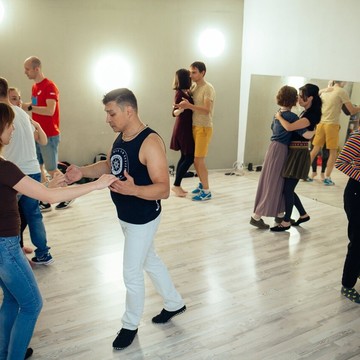 However, in parts of Brazil, such as the North and Northeast, the word has bled over to mean “quickly,” presumably because light things are also frequently quick things.)
However, in parts of Brazil, such as the North and Northeast, the word has bled over to mean “quickly,” presumably because light things are also frequently quick things.)
assim eu vou me apaixonar — this is how I will fall in love
If you learn the lyrics of this song, you’ll not only be able to sing along in the arms of your sweetheart, you’ll be able to mix and match the words to describe your own forró experiences. For example, let’s just suppose I wanted to brag about dancing with one of the world’s biggest forró stars:
Convidei Janayna pra dançar um xote em Paris. Me arrepiei e o meu coração bateu ligeiro ao sentir os seus dedos no meu cangote. Forrozear com essa estrela me deixou sem jeito.
I invited Janayna to dance a xote in Paris. I trembled and my heart beat quickly when I felt her fingers on the side of my neck. Dancing forró with this star left me dazed.
Forró is often criticized for its lyrical and musical simplicity. However, when you’re learning a language, it’s definitely useful to have slow songs like these with simple, repetitive vocabulary and uncomplicated themes.
However, when you’re learning a language, it’s definitely useful to have slow songs like these with simple, repetitive vocabulary and uncomplicated themes.
Other Forró Recommendations
In that spirit, there are many other great songs from Bicho de Pé worth looking at, as well as Dominguinhos (the artist above from the video of forró styles).
I also recommend checking out the song “Eu So Quero um Xodó” (“I Just Want a Sweetheart”), especially the version by Gilberto Gil, and anything by Luiz Gonzaga and Alceu Valença’s “Tropicana” (“Tropical Woman”).
If you’re ready to move on to more complexity (musically, lyrically and thematically), check out Orquestra do Fubá. One interesting song to tackle is “Boca de Caixa” (depending on interpretations, it could be translated as “head of the line”), which still talks, well, about trying to get your sweetheart to come over, but in the context of a more realistic and touching whirlwind of life.
I hope this has been enough to push you to improve both your forró and your Portuguese. There are other excellent articles in English on forró and its history, but eventually you’ll want to take trips to Brazil, as I often have, for live forró classes in São Paulo, Belo Horizonte, Salvador, Rio and more.
These are links to four of my personal favorite forró schools or teachers in Brazil, but there are many more all over the world, and there just might be a forró group already meeting where you live. Europe has an active festival scene and many dance groups, and North America is starting to catch up.
And even if you never want to dance (what’s wrong with you?), you can improve your Portuguese by just listening to great forró songs on Google Music or other services. You can also look for more songs and music videos related to forró on the FluentU program, which even includes interactive captions and transcripts so you can follow along. For songs found on other platforms, lyrics in Portuguese can generally be found by googling the name of the song plus letra (lyrics).
But really, you’re clever enough to move your body a bit while enjoying Portuguese, right? Forró is a simple dance to learn, so get out there and enjoy it.
Hope to see some of you, soon, on a dance floor somewhere.
Dança gostoso! (Dance amazingly!)
Mose Hayward blogs regularly about the world’s best forró places, forró flirting, forró fashion and more.
Download: This blog post is available as a convenient and portable PDF that you can take anywhere. Click here to get a copy. (Download)
mosehayward
Blogs at TipsyPilgrim.com
« 16 Brazilian Bloggers All Portuguese Learners Should Follow
7 Top Portuguese MOOCs for Coursing Through the Language »
School of Brazilian dances Forro and Samba Forro4ru on Sretensky Boulevard - reviews, photos, prices, telephone and address - Courses - Moscow
/ 19 reviews
Opens tomorrow at 10:00
- Description
-
Dreaming of sunny Brazil? You can also get acquainted with Brazilian culture and dances in Moscow.
 Brazilian dance school Forro4ru will help you find yourself.
Brazilian dance school Forro4ru will help you find yourself. School Forro4ru is the latest program of Forro and Carnival Samba courses. Here you can find various variations of seminars for personal development and discover something new for yourself.
The dance studio not only teaches you how to move plastically, but here the very way of life of a person changes.
Our Forro4ru school employs choreographers who devote themselves entirely to dancing. And you are also offered to become a member of this friendly family.
You can sign up and come to a trial lesson for free. You can contact by phone.
Phone
+7 (977) 708-19-... - show
to Sretensky Boulevard metro station — 0.1 km
Get directions
By car, on foot or by public transport… show directions
- Opening hours
-
Tue, Thu: 10:00-23:45; Sat: 12:00-23:45
- Company on the web
-
forroforru.
 ru
ru
- Certificates and documents
- Are you the owner?
-
- Get access
- Get widget
- Report a bug
62 photos Brazilian dance schools Forro and Samba Forro4ru on Sretensky Boulevard
Official Youtube channel Brazilian dance schools Forro and Samba Forro4ru on Sretensky Boulevard
Specialists of the Brazilian dance school Forro and Samba Forro4ru on Sretensky Boulevard
-
Daria Vadimovna Suslova
Experience 6 years • Choreographer
1 review
No bad reviews
-
Alexander Alexandrovich Baryshev
Experience 8 years • Dance coach, choreographer
1 review
Excellent specialist
- Search:
-
Speciality
- Experience AnyOver 5 yearsOver 15 years
-
Children's
Similar training centers nearby
All reviews in a row 19
Sort by: by date at the rate by popularity From photo
Similar courses
Interesting story
The address of the Brazilian dance school FORROFORRU: Sadovnicheskaya street, 54с1. In the same building there are: the Gold & Dance company on the Novokuznetskaya metro station, the Crazy Salsa Latin American dance school on Sadovnicheskaya street, 54 building 1, the network of wedding dance studios Dance of Your Love on the Polyanka metro station, the KatanaClub Japanese fencing school on the Novokuznetskaya metro station, FreshFilms acting classes . Signing up for a course of interest and gaining new knowledge these days is quite simple. The Forro4ru Brazilian Dance School is the latest course programs and teachers with great experience. The Forro4ru Brazilian Dance School employs choreographers who devote themselves entirely to dancing.
Signing up for a course of interest and gaining new knowledge these days is quite simple. The Forro4ru Brazilian Dance School is the latest course programs and teachers with great experience. The Forro4ru Brazilian Dance School employs choreographers who devote themselves entirely to dancing.
Frequently asked Questions about the Brazilian Dance School Forro and Samba Forro4ru
- 📍 Where can I find Forro4ru Brazilian Dance School and Samba?
The address of the School of Brazilian dances Forro and Samba Forro4ru: Russia, Moscow, Sretensky Boulevard, 6/1s2.
- ☎️ Is the phone number of Forro and Samba Brazilian Dance School Forro4ru available?
Telephone to receive calls: +7 (977) 708-19-94.
- 🕖 In what mode does it work is this establishment?
Reception schedule: Tue, Thu: 10:00 - 23:45; Sat: 12:00 - 23:45.
- ⭐ What is the rating of this establishment on Zoon.ru?
On average, the company is rated by Zoon.ru users at 4.6. You can visit the page Forro4ru School of Brazilian Dances and Samba reviews , to write your review!
- 🧾 Is it possible to see with a list of prices and services in this establishment?
Such information is On the page with the services and prices of the Brazilian Dance School Forro and Samba Forro4ru.
- 📷 How many photos are there in the Forro4ru School of Brazilian Dances and Samba Forro4ru questionnaire on Zoon.ru?
There are 90 images on the page of Forro and Samba School of Brazilian Dances Forro4ru, among which there are photos official documents.
- 💼 What specialists work at Forro4ru Brazilian Dance School and Samba?
Daria Vadimovna, Alexander Alexandrovich work here. On the page about the specialists of the Brazilian Dance School Forro and Samba Forro4ru you can find more detailed information: contact details, specialization, availability of certificates, etc.

- ✔️ How reliable is the information posted on this page?
Zoon.ru tries to post as much as possible Accurate and up-to-date information about establishments. If you see an inaccuracy and/or are representative of this institution you can use the feedback form.
Average score - 4.6 based on 19 reviews and 10 ratings
Brazilian rhythms in Siberia | Date East
At a corporate party in Kazakhstan, a guest coach showed how to dance Brazilian dances. Then it all started. “It's hard not to fall in love with the energy of these dances,” says Alexey. “I entered the master’s program at NSU and almost immediately came to the open forro lessons that were held in Academgorodok.” Here Aleksey met many interesting and enthusiastic people who have now become close friends.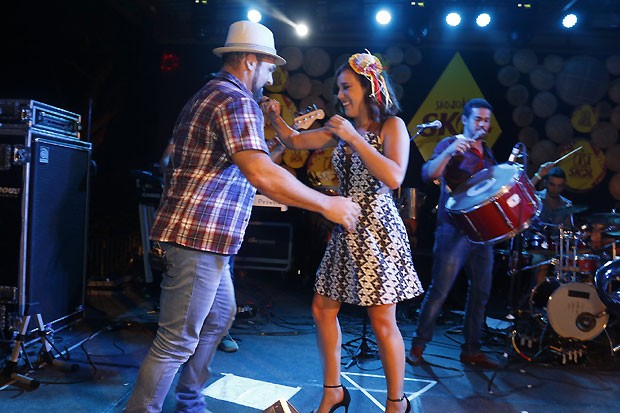
“Forro is not just a dance, it's a special format of communication”, notes Aleksey. Everyone dances with everyone, every new dance the couples change. The music is very emotional with a wide range of rhythms, ranging from slow and romantic to super-fast and energetic. Traditional forro music involves three instruments - the accordion, the zabumba drum and the triangle. “There are melodies that are great for a holiday and a feast. Some of them migrated from Russian folk motifs. We turn them on at forro parties,” says Alexey. The first time he spent in training every day, on weekends he also went to the gym. Using aviation terminology, forro trainers divide the participants into three groups - paragliders, hang gliders and motor gliders. Paragliders are newbies. Alexey moved to the second stage and has already participated in two festivals "Forro na Siberia", including as a musical performer forro (violeiro).
Special mention should be made about the festivals. The organizers bring coaches from Brazil and Europe to Novosibirsk, and non-stop master classes have been going on for three days. There are only a few hours of sleep between intense dives. For the final party, all participants gather on a ship, travel together, dance and play live music. This year, the Forro na Siberia festival gathered more than a hundred fans of Brazilian dances.
The organizers bring coaches from Brazil and Europe to Novosibirsk, and non-stop master classes have been going on for three days. There are only a few hours of sleep between intense dives. For the final party, all participants gather on a ship, travel together, dance and play live music. This year, the Forro na Siberia festival gathered more than a hundred fans of Brazilian dances.
“In our classes we not only dance, but also study the history of dance and its styles. The backbone of the group is approximately 50 people from 18 to 50 years old. And everyone communicates wonderfully, age is not a hindrance here. If we consider forro as a format of communication, then communications occur at the level of emotions, not words. Even dance opens up new possibilities. For example, I plan to seriously study the Portuguese language. Some Brazilian coaches do not know English, they can be understood intuitively or with an interpreter. But I would like to learn the language myself in order to read literature in the original,” says Alexey.


